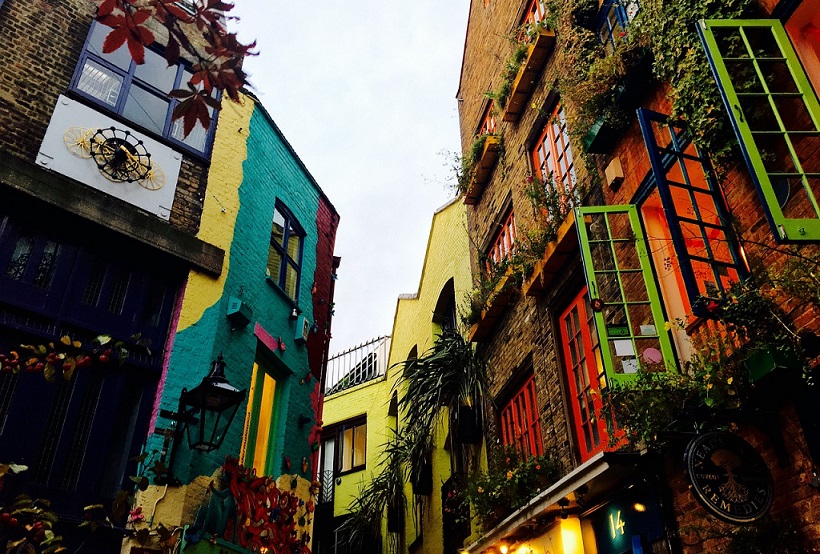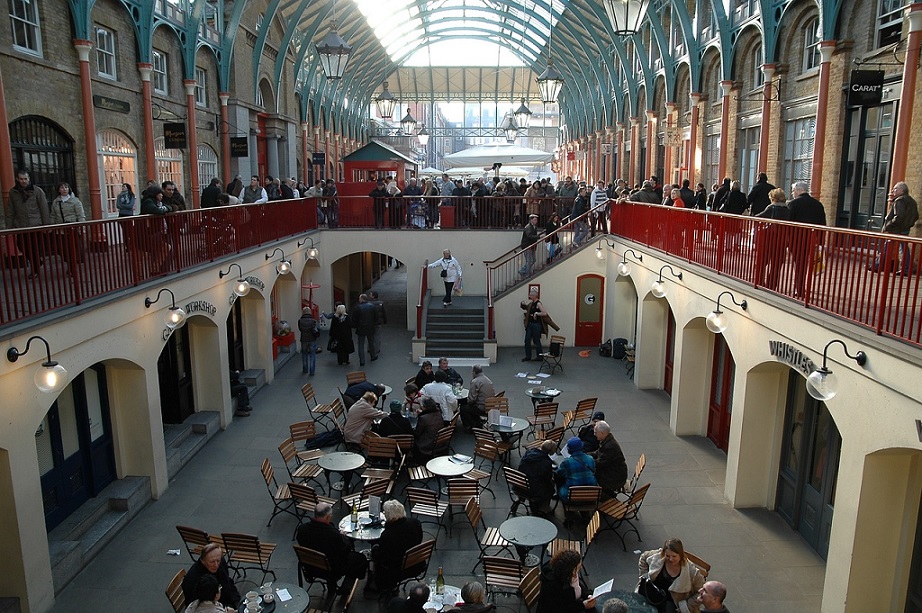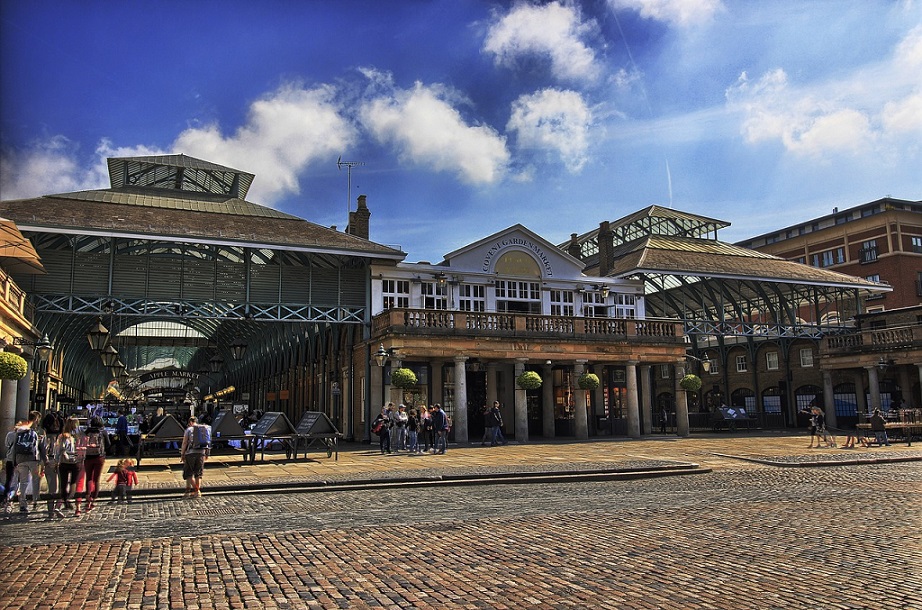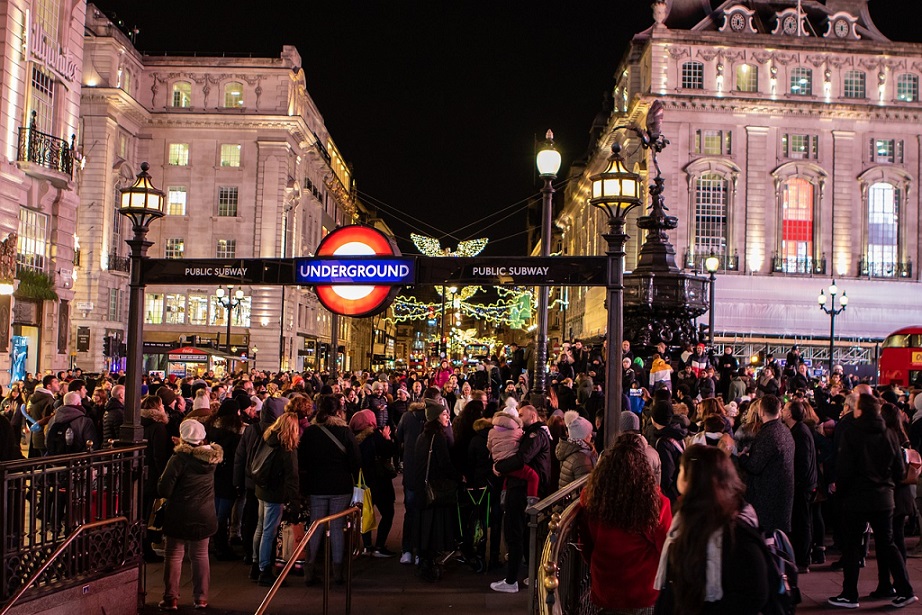Originating as a small settlement on the outskirts of Londinium, later abandoned and turned into an orchard and vegetable garden, then it became the biggest market in the city and, centuries after that, was rebuilt and rose to be one of the most vibrant parts of the British capital. Its name is in every tourist guide. Covent Garden reinvents itself or it dies.
Photos: Adrian Cuesta
Sitting in one of the cafes of the Market Place listening to a live soprano performance is like a journey through time. To enjoy a cafe in any corner of the Piazza is an invitation to travel back to an age of elegance and beauty.
Covent Garden knows this very well and every day it takes pleasure in presenting a colourful scene, full of agreeable restaurants, theatres, museums, cafés, pubs, and the small gourmet boutiques and independent shops which extend along Neal’s Yard and Neal Street.
When the architect Inigo Jones built the central plaza in the heart of the area in 1630, Covent Graden already had a long journey behind it going back to the Roman conquest.
Abandoned for centuries, its lands were taken over as a market garden by St. Peter’s Convent to supply fruit and vegetables to their community: hence the name.
 With the image of the Great Fire of London in 1666 still present in the collective memory, it began its period as a fruit and vegetable market. Gradually it became one of the most famous in London, known by local people as the Larder of the City. No-one could imagine today that there was once a time when it was known as one of the red-light districts of the city and a meeting place for prostitutes and thieves.
With the image of the Great Fire of London in 1666 still present in the collective memory, it began its period as a fruit and vegetable market. Gradually it became one of the most famous in London, known by local people as the Larder of the City. No-one could imagine today that there was once a time when it was known as one of the red-light districts of the city and a meeting place for prostitutes and thieves.
In 1973 a new wind of change reached the area; traffic and the pollution from the intensive use of the area over centuries as a market had worn it out, and it was decided to move the market to south London. Covent Graden then became the spectacle of lights music and excitement that we know today.
It is impossible to walk through its streets without noticing the white columns of the Royal Opera House, which rise proudly in front of the Piazza. Its 2268 seats have allowed this building of 1732 to welcome within its walls centuries of opera, dance, theatre and ballet. Having survived the depredations of the climate, the great fire and the Luftwaffe.
The Royal Opera House keeps in its memory glorious nights of applause that have become part of history. Artists of the calibre of Maria Callas, Placido Domingo, or Luciano Pavarotti have contributed to its fame.
 But, what is it that makes Covent Garden such a special magic place in the centre of the big city? King Charles I, who loved architecture observed that London – in contrast to other European cities like Rome, Florence or Paris – did not enjoy any elegant plazas or grand avenues.
But, what is it that makes Covent Garden such a special magic place in the centre of the big city? King Charles I, who loved architecture observed that London – in contrast to other European cities like Rome, Florence or Paris – did not enjoy any elegant plazas or grand avenues.
He then began a personal crusade for the construction of beautiful buildings, and fortunately was followed by builders and architects, names like Christopher Wren, Norman Foster and Edwin Lutyens have left their marks here. The North Hall, the West Piazza and South Hall Courtyard concentrate most of the activity and noise that gives the area its personality.
Covent Garden presents itself like a little theatre, with its small shops open every day of the year, a place of tireless comings and goings of visitors, through which the great names of opera have passsed, and more recently those of the cinema too, with its grand premières around the Plaza.
Far from losing its commercial spirit it boasts the biggest Apple shop in the world, the oldest restaurant in London, and independent boutiques for the most refined tastes.
 It is impossible not to feel the wave of imagination among its streets, where mime artists, trapeze artists and musicians invite tourists and locals to sit down by the light of the cafés. A show that makes us feel for a moment that we are a bit artistic too. Colour bustle and sophistication ar e the words that describe this exciting part of London, the mad dream of a monarch who wanted to give the city a small corner of elegance.
It is impossible not to feel the wave of imagination among its streets, where mime artists, trapeze artists and musicians invite tourists and locals to sit down by the light of the cafés. A show that makes us feel for a moment that we are a bit artistic too. Colour bustle and sophistication ar e the words that describe this exciting part of London, the mad dream of a monarch who wanted to give the city a small corner of elegance.
(Translated by Graham Douglas – email: ondastropicais@yahoo.co.uk) – Photos: Pixabay













.jpg)












